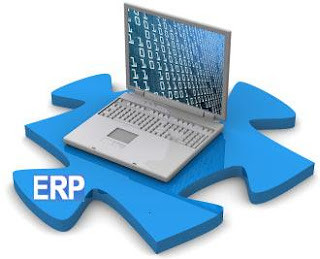Mobile Technology - 3 Things to Consider When Purchasing
As ERP consultants, we see the 21st century going down in history as a time of the age of mobility. So what’s the big deal with that, you say? One...
2 min read
goERPcloud ERP Trials Wed, Jul 29, 2015
If you and your people are bending over backwards in your accounting system to make workarounds work and wasting countless hours on redundant financial processes then you are not alone, but is growth sustainable with outdated and underpowered financial systems?
Changing accounting systems represents a significant change in a business that can cause disruption across departments, but avoiding a new implementation will only cause more problems down the road. Is it time to think about changing accounting systems? If you find any of these five common problems familiar, than it might be time to switch.
You’re unable to easily scale operations to support business growth
If you have reached the limit of the number people who can access information and total transactions are overflowing and slowing down the system, or the size restrictions of your database are hindering scalability, your system is hindering growth. Expanding product lines and entering new markets creates new financial complexity that basic accounting software can’t handle. Even the simple transactions like invoicing and month-end closing, can take hours—even days—to complete. You need workflow automation to handle growth without adding to your payroll.
Your system lacks control over access
If your system lacks controls to ensure a detailed and accurate audit trails or if multiple users can make changes to financial entries without proper tracking, you are putting your business at risk for fraud and non-compliance. You need a system that will support and enforce clearly-defined roles and processes. You need a system that delivers stricter control over critical processes like payment processing, purchasing, and inventory management.
You are reactive when you need to be proactive
Entry level accounting systems like QuickBooks can deliver birds-eye-view snapshots of your sales performance for the past quarter, but imagine what you could do with insight into which products produce the highest margins and which customers are likely to purchase the highest volume of those products. Historical info is important but with insight into current activities and developing trends you’ll be able to make proactive decisions to move your business forward. The right business management solution can give you full visibility into what drives your profitability and the ability to turn those profits into the cash flow that will support your future growth.
You can’t support a mobile workforce
The traditional workspace is dissolving and it’s now a competitive imperative to have real-time access to data and processes from anywhere at any time. Business doesn’t stop because you’re on the road or working from home, and your competitors are sourcing talent pools in remote locations to improve their people. With a cloud enable system, your people will be better connected, more productive, and happy with systems that support the mobile devices they prefer to use.
You struglle to meet customer expectations
When you have several disparate systems rubber-banded together in order to manage your finances, administer contracts, track customer interactions, or manage delivery you are wasting hours and missing deadlines. When you can’t access a 360-degree view of your business and track customer interactions, forecast demand, and manage your finances you find that it is increasingly difficult to meet customer expectations in a market where customers have come to expect immediacy. To succeed in an increasingly competitive economy, you need a well-tuned supply chain and the ability to manage customer and vendor requirements.
If you are using entry level accounting software like QuickBooks along with Microsoft tools like Windows, Outlook, Excel or Word, you can ease the transition into a more powerful accounting solution by choosing another Microsoft product. Microsoft Dynamics ERP solutions like Dynamics AX, GP and NAV seamlessly connect with other Microsoft software and offer easy to learn and use functionality. This will ease the transition as you implement a major technology change like changing accounting systems.
To see the latest version of Microsoft Dynamics ERP including AX, GP and NAV, choose an easy free demo trial to start today.

As ERP consultants, we see the 21st century going down in history as a time of the age of mobility. So what’s the big deal with that, you say? One...

1 min read
There are many references to the importance of ERP and CRM integration in our 8 previous blogs written about "What Does ERP Stand For?" Today we are...

As an ERP provider, it is very easy to assume that everyone knows what we are talking about when we use all of our acronyms like ERP, CRM, EFT, and...